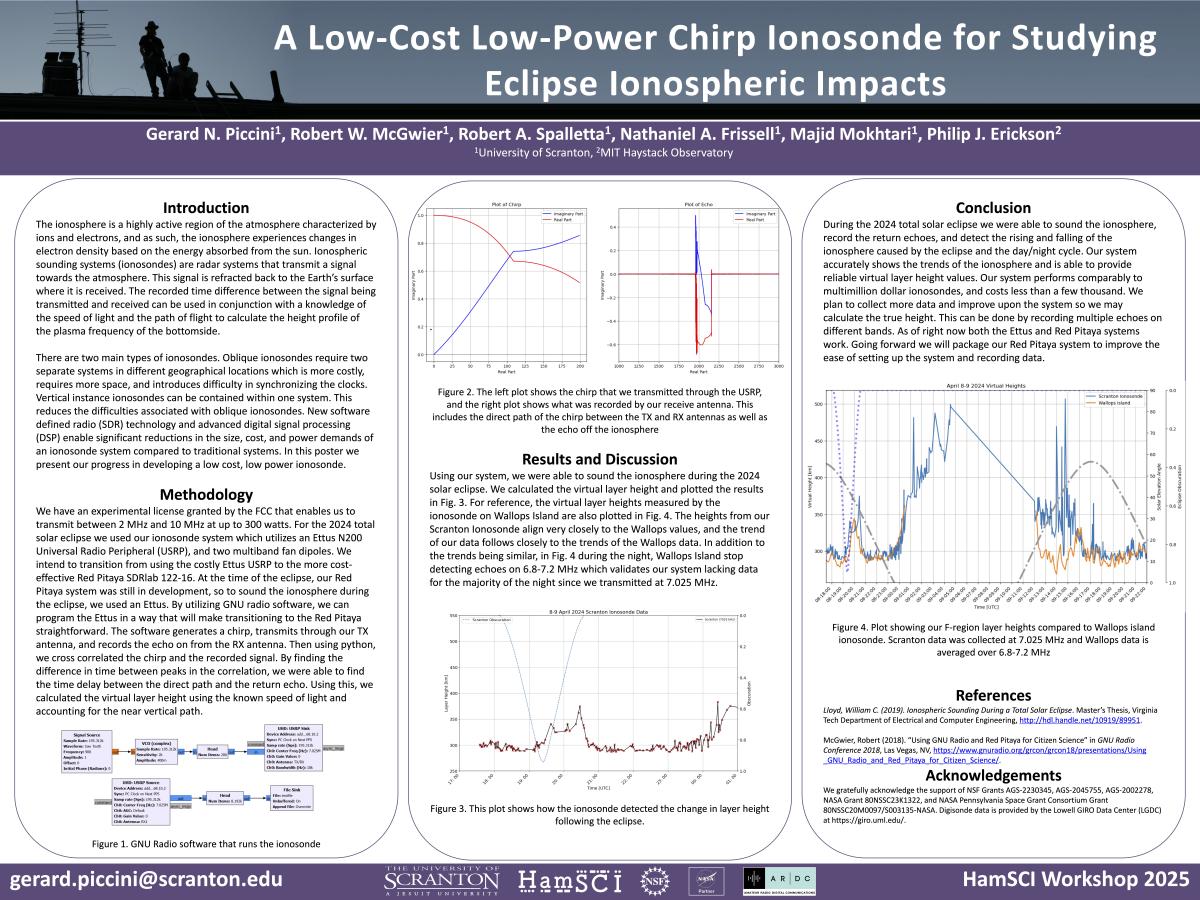| Title | A Low-Cost Low-Power Chirp Ionosonde for Studying Eclipse Ionospheric Impacts |
| Publication Type | Conference Proceedings |
| Year of Conference | 2025 |
| Authors | Piccini, G, McGwier, R, Spaletta, R, Frissell, N, Mokhtari, M, Erickson, P |
| Conference Name | HamSCI Workshop 2025 |
| Date Published | 03/2025 |
| Publisher | HamSCI |
| Conference Location | Newark, NJ |
| Abstract | The ionosphere is a region of the atmosphere characterized by both ions and electrons. It is highly active and experiences changes in parameters such as electron density at different altitudes, based on the energy absorbed from the sun. Ionosondes are a type of radar used to gather data about the height of the ionosphere by transmitting a signal towards the ionosphere. This signal is refracted back to the Earth’s surface and received in such a manner that return echoes can be timed to calculate the height profile of the bottomside ionosphere. Traditional ionosondes require large antenna systems and high amounts of power. Recent advancements in software defined radio (SDR) technology, advanced digital signal processing (DSP), and computational efficiency enable the size, cost, and power demands of an ionosonde system to be reduced. Two systems are currently used in this project: the Ettus N200 Universal Radio Peripheral (USRP) and the newer Red Pitaya SDRlab 122-16. Using amateur radio fan dipoles and GNU Radio code, the Ettus system was used successfully to sound the ionosphere during the 2024 total solar eclipse. It recorded virtual layer height data comparable to multimillion-dollar ionosonde systems. We are now working to assemble the Red Pitaya system into a smaller form that can be assembled inexpensively and operated with ease. In the following weeks we will improve our sounding methods to be able to obtain more data. |
| Refereed Designation | Non-Refereed |
| Full Text |

